Dentsply Sirona and Siemens Healthineers just unveiled the MAGNETOM Free.Max Dental Edition, which is the first-ever dental-dedicated magnetic resonance imaging (ddMRI) system.
This is kind of huge news for dental imaging and diagnostics.
They introduced this new tech at the European Congress of DentoMaxilloFacial Radiology (ECDMFR) this month in Germany.
So, what makes this ddMRI system so special?
It's the result of a joint research project between Dentsply Sirona and Siemens Healthineers, and they even collaborated with some top dental universities around the globe to make it happen.
Siemens Healthineers for those who don't know is a world leader in medical MRI technology, and Dentsply Sirona which likely needs to introduction in dentistry, changed the dental world with CEREC generations ago, and now looks like they are poised for another major innovation.
I read the press release and was fortunate to discuss at length with Max Milz, the Global Business Unit Head at Dentsply Sirona, about what this means and the indications.
Here’s everything we know!
Why an MRI in Dentistry?
The main goal of the ddMRI system is to improve dentomaxillofacial diagnostics by providing soft tissue imaging.
Think about it, right now in dentistry our imaging techniques revolve around x-rays, OPG, CBCT and arguably intraoral scanning.
Siemens Healthineers is the world market leader in MRI, and MRI has a has a few key benefits over x-rays or CBCT. Notably:
- You can see soft tissues clearly.
- So this allows, for example, to see if something is an inflammation active inflammation or not.
- It allows you to actually see the inferior alveolar nerve and not just the nerve canal.
- Could be used as a diagnostic tool for many conditions
- Diagnosing various inflammatory conditions things like periodontitis, peri-implantitis, etc.
- Will have uses in endodontics and diagnosing periapical infections
- Functional imaging of the TMJ
- You can actually see the TMJ disc, how the disc is located, is it fractured or not etc.
- Currently there is no good way of imaging the TMJ without an MRI.
- The biggest advantage over CBCT - MRI is radiation free.
- It can be used on children, pregnant women etc.
- It can be used for regular monitoring
This means it could potentially help dentists detect oral diseases early on and avoid over- or undertreatment.
So far, the Dentsply Sirona says initial clinical trials have shown some promising results for things like wisdom tooth extraction, endodontics, TMJ disorders, periodontitis, and orthodontics.
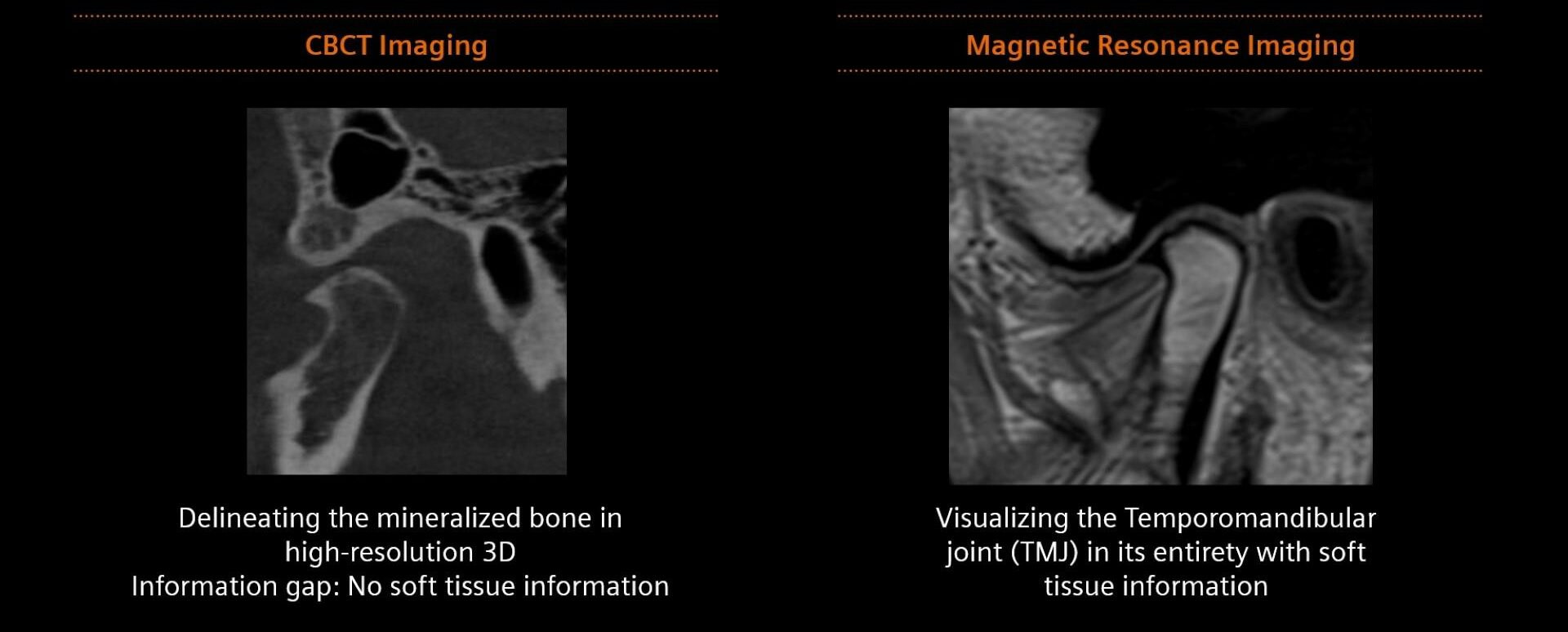
Diagnosing TMJ disorder.
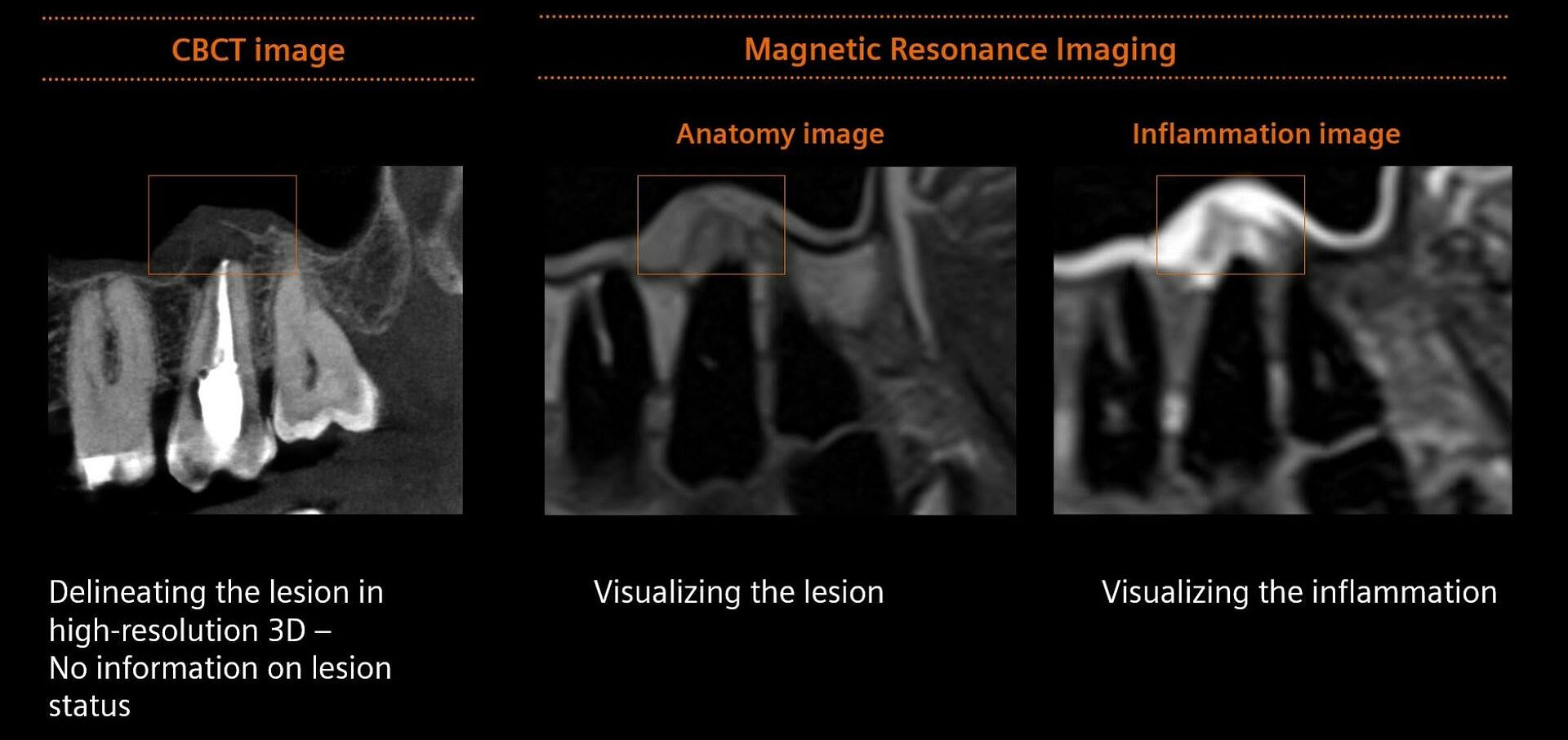
Detecting lesions.
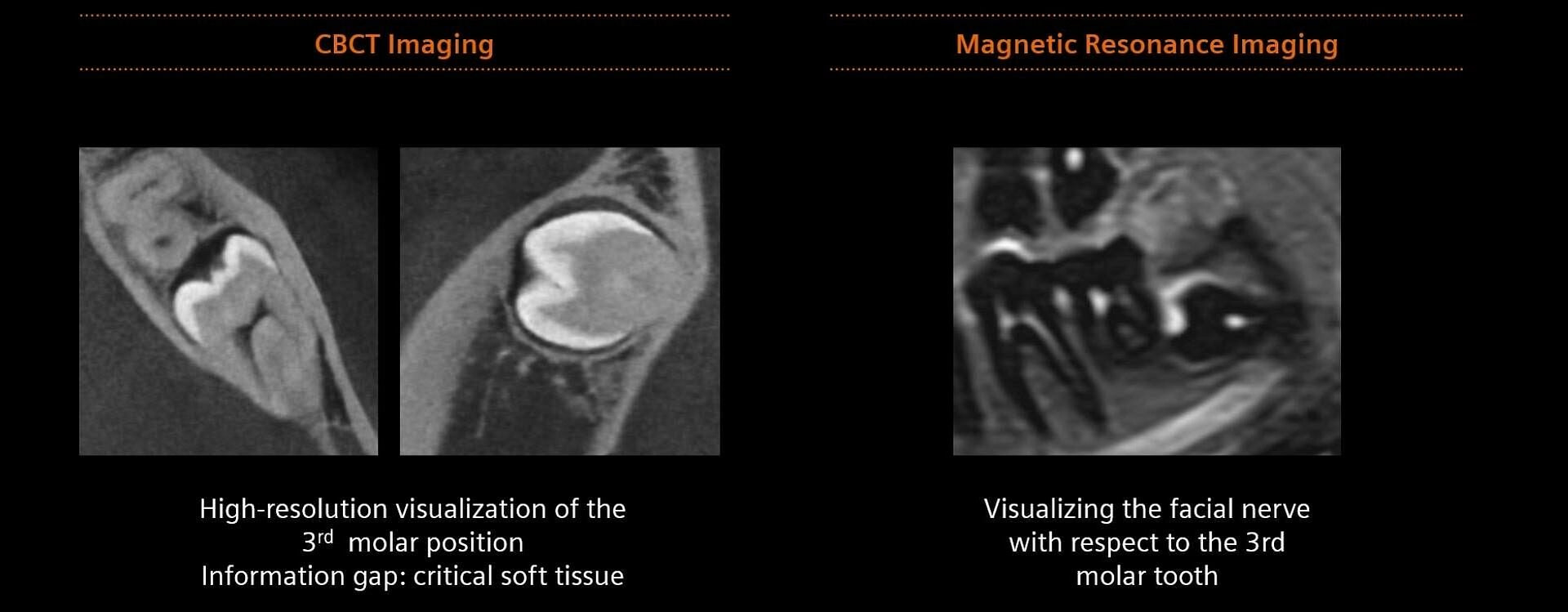
Visualizing wisdom teeth.
What do you think? Does it have the potential to change the way dentists diagnose and treat oral health issues?
Key Features of the MAGNETOM Free.Max Dental MRI
The company made this clear that this was designed for dentistry and with some notable features with dentists and dental clinics in mind.
One of the key features of the MAGNETOM Free.Max Dental Edition is its dental-dedicated receiver coil and specific scan protocols designed for dental indications. These are supposed to make the imaging process easier and provide high-quality results.
The system is made in a way so that it can be operated by dentists. That's the difference to other MRI's today.
It uses a technology called dry cooling. That means it doesn't need a lot of helium and that means you don't need a quench pipe. So the infrastructure requirements are way lower.
With the workflow in place and using the Siemens Healthineers software, Max Milz, advised me that an MRI can be taken within 20 minutes. So it makes it suitable for dental office use. You also dont need to undress the patient for its use like traditional MRI.
Also apparently it shields out stuff the dentists are not supposed to see (and have no business doing diagnostics on) like brain tissue. So it's really developed for dental applications.
Max Milz, who used to work at Siemens before joining Dentsply Sirona, says "MRI is a well-established technology, but so far it had several constraints that made it not so suitable for dental, and I think that the moment for MRI in dental has now come."
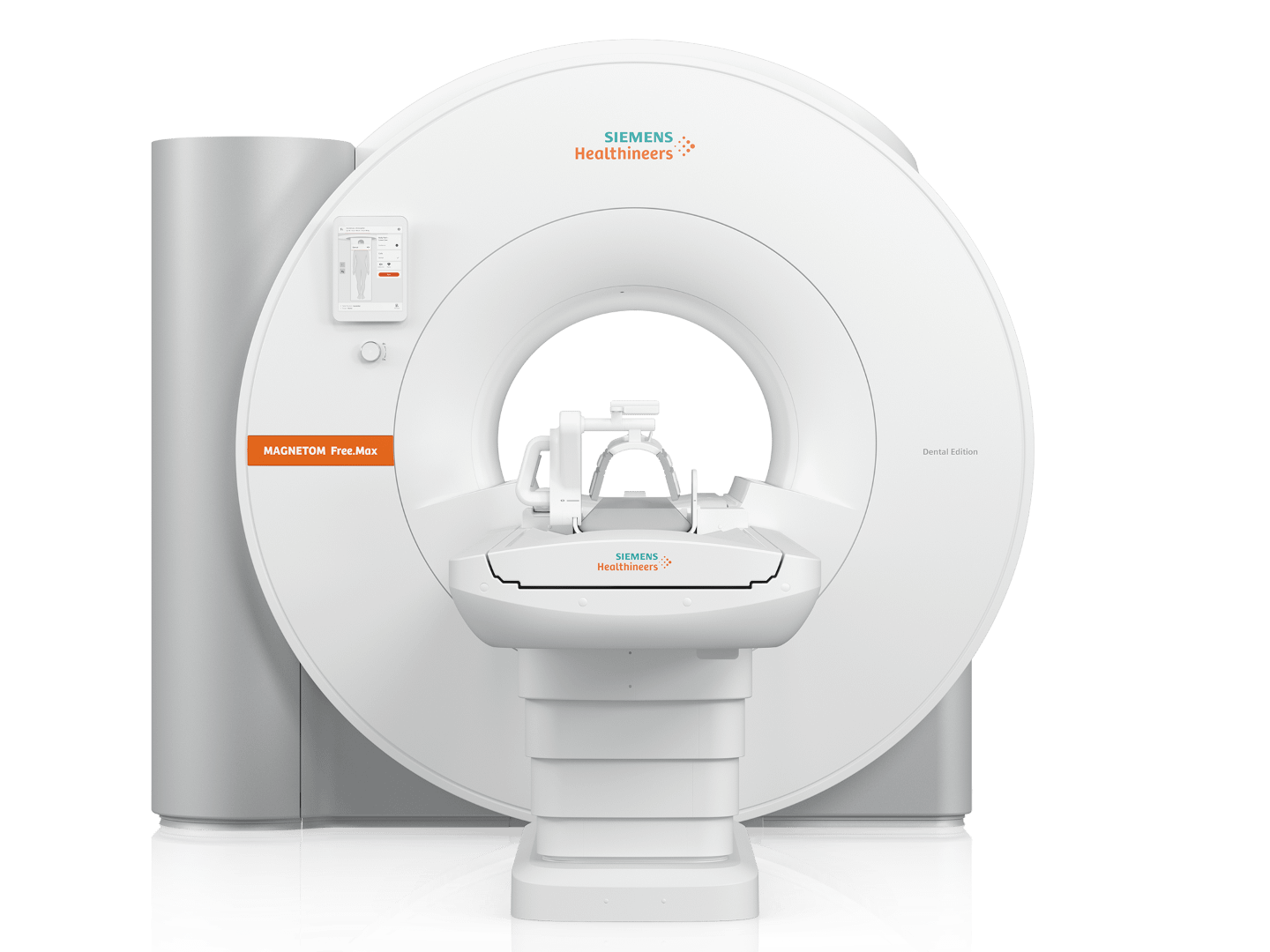
MAGNETOM Free.Max Dental Edition by Siemens Healthineers.
Dentsply Sirona in their press conference said the workflow is similar to a dental cone beam CT (CBCT) scan. And thanks to its compact size and innovative helium-free cooling technology, it would be easier to set up in dental schools and universities - which is where the companies are targeting initially.
I personally thought this was still a few years away, but it will be available for order in Q3 / Q4 in selected markets. Regulatory clearance in the CE markets is expected end of this year, with FDA 510k submission planned for early 2025. Deliveries could be expected towards the middle of 2025.
Quite exciting for dentistry to be frank and sooner than I thought. The company has been apparently working on this for the last 3 years.
Cost of a Dental MRI?
This was something Max advised as I asked and is not a quote from the company but rather a ballpark.
What does an MRI cost anyway? Is it 100k? 200k? 500k? 1 million? More?
Well including the infrastructure - because you have to build a cage in a dedicated room to shield the magnet fields, you're likely talking about a significant investment.
Although the exact price is not yet disclosed, I was told that the dental MRI will be substantially more affordable than conventional higher field MRIs
Then the question for dental practices is what’s the business model here? If you scan a patient every 20 minutes or so and considering the referrals you may get from this, this could be a great differentiator for dental practices
Either way, no doubt this is likely to be picked up by hospitals and universities at this stage, rather than dental clinics – which is a similar dynamic with the introduction of CBCT into dentistry back in the day, which was also championed by Dentsply Sirona
What does the ddMRI System mean for dentistry?
Professor Dr. Rubens Spin-Neto from Aarhus University in Denmark thinks the ddMRI system could lead to more targeted and successful patient treatment by providing additional info compared to CBCT scans.
Dentsply Sirona and Siemens Healthineers are clearly excited about the potential of ddMRI in dentistry. They're hoping to make advanced diagnostic imaging tech more accessible to dentists and their patients.
“We’ve reached a new milestone making a state-of-the-art diagnostic imaging technology accessible in the dental space for the benefit of patients,” said Max Milz at a press briefing in Freiburg.
“We’re very grateful for the excellent collaboration with Siemens Healthineers, which now allows us to make the diagnostic power of ddMRI available to dentists and their patients. Also, our cloud platform DS Core will support ddMRI, as clinicians can use the platform to share patient cases with referral dentists.”
Of course, as with any new technology, there's still a lot to learn about ddMRI.
It'll be interesting to see how it performs in real-world settings and the training requirements might affect its widespread use. Most dentists are familiar with x-rays even if its just 2D, but MRI technology is something many of us have zero experience in.
Overall, it's incredible to see companies working together to push the boundaries of what's possible in dental imaging.
Who knows, maybe one day getting an MRI scan will be as common as a CBCT at the dentist's office.
What do you think about this new ddMRI system?

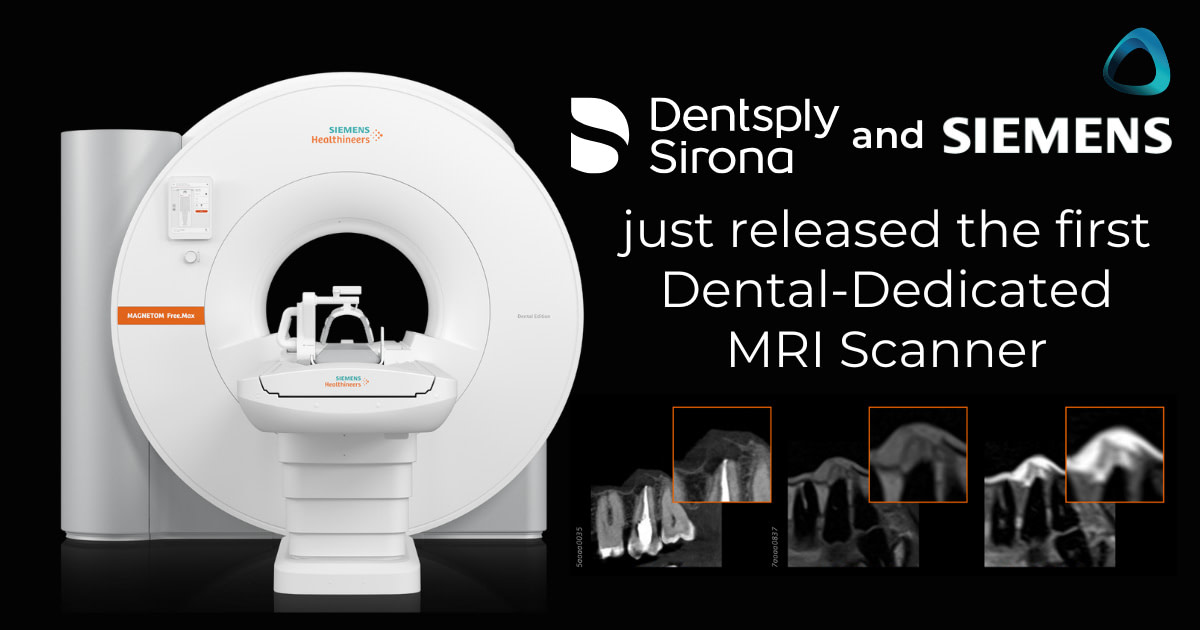
Very interesting subject. Can the dental-dedicated receiver coil and specific scan protocols designed for dental indications be use with a whole body siemens MRI
I will ask the DS team as this entire subject of MRI is totally new for me. Whole new world is coming in the future…
mri usage is very limited in dentistry as dentistry or maxillofacial anatomy is mostly hard tissue and most of the soft tissue anatomy is visible or surface anatomy except for tmj disc and very fewothers where discdisorders can be predicted most of the times with clinical expertise.or with medical mri if required.
hello I am so happy to find a space where i can communicate.I am a dentist and research scientist currently working on integrating AI models to create 3d reconstruction of dental images using soft copies created by MRI scans. Fortunately i found this article and i will be very glad if you share any dental MRI images of any specific case hiding details of the patient I can include you in my study . Thank you
Hey there Saisrirao. I personally don’t own an MRI so have no images from my cases I can share. Looking into it though and would love to own one some day. Good luck with the study!